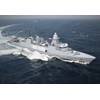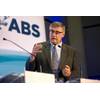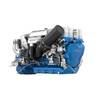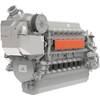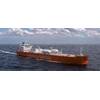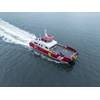Rolls-Royce Celebrates 20th Anniversary of MTU Series 4000
Packed with technical innovations, the MTU Series 4000 engine received accolades when it was presented to international experts for the first time at the SMM trade fair in October 1996. Series 4000 engines were the first of their kind to be fitted with common rail injection as standard and were 10 years ahead of their time. The Series 4000 has gone on to become MTU’s biggest selling engine in production.
Knut Müller, Head of the Marine and Government Business Division at MTU, said: “Even today, 20 years after it was first launched on the market, the advanced design Series 4000 diesel engine and the new gas engine for marine applications which is also based on the Series 4000 engine, are the leading technologies in the marketplace.”
To date, over 37,000 Series 4000 engines have been sold to customers across the world for a wide variety of applications from marine propulsion and energy generation to off-highway vehicles, and have successfully completed over 180 million operating hours.
At SMM (6 to 9 September 2016 in Hamburg) Rolls-Royce will be celebrating the success story of the MTU Series 4000 engine, which continues to have a strong influence on the industry. An exhibit will be on display on Stand 305 in Hall 3A that shows the development of the Series 4000 from its origins in marine applications to a modern green and high-tech propulsion system. The MTU brand is part of Rolls-Royce Power Systems.
Extension of the MTU product portfolio
Series 4000 diesel engines were developed jointly by MTU Friedrichshafen and Detroit Diesel Corporation for the purpose of expanding their commercial business. The first Series 4000 engine for marine applications was delivered to the Heesen shipyard in 1997. Within the first ten years more than 10,000 type 16V 4000 engines were delivered.
In 2008, the Ironmen engine was launched. This extremely robust and cost effective version of the Series 4000 engine was developed specifically for work boats, with its low fuel consumption and long maintenance intervals playing a major role in creating the company’s strong presence in this market.
The series is based on the principle of a robust basic engine available in a variety of cylinder versions so that it can be used in marine and energy applications, and in off-highway vehicles. When the designers began to develop the technical concept in 1992, the specifications for the new engine were clear: low complexity, long maintenance intervals, low operating costs and a long service life compared with its successor engines. These features have had a powerful influence on succeeding generations of the Series 4000 engine.
The Series 4000
With a volume per cylinder of between four and five litres (4.06 – 4.77 litres), the Series 4000 engines were the logical further development of the MTU Series 396 engine. Today, they are available with power outputs extending from 746 to 4,300 kW. Their basic design results in an outstanding power-to-weight ratio and compact dimensions. Due to the combination of key technologies such as turbocharging, exhaust gas aftertreatment and common rail injection, Series 4000 engines are among the most advanced propulsion technologies available in the market – which is just as true today as it was at launch.
20 years of experience with common rail injection
Common rail injection technology developed by MTU subsidiary L’Orange is incorporated into Series 4000 diesel engines and is now in its fourth generation. MTU had already begun to use common rail technology long before it was introduced into the automotive industry.
The common rail system makes it possible to electronically control all the injection parameters that have an influence on the combustion process, regardless of the speed of the engine. Compared with the systems that were previously available, this resulted in a considerably higher injection pressure of 1,400 bar. Today’s fourth generation of this technology achieves 2,200 bar in marine applications. Common rail technology reduces exhaust emissions and fuel consumption and in 1996, the Series 4000 achieved a 10 per cent reduction compared with rival products available at the time.


